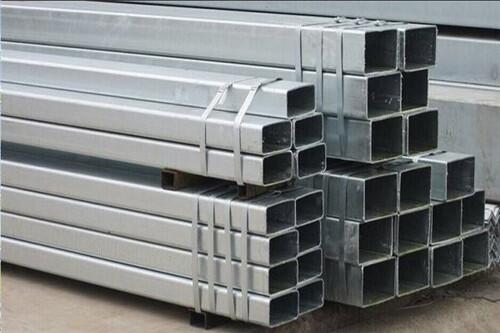
The choice between rectangular and square tubes primarily depends on the direction of the load.
For isotropic loads or torques: Square tubes are superior.

The cross-sectional shape of square tubes is more stable and is suitable for scenes that need to withstand large vertical loads. They also have advantages in situations that need to resist shear forces because their cross-sectional areas are usually larger than rectangular tubes and can better disperse shear forces. The production of square tubes is relatively simple and has a wide range of applications.
1. Definition of bending strength
Flexural strength is defined as the maximum load-bearing capacity of a material under bending load. The higher the bending strength, the better the durability and the longer the service life of the material.
When a material is used as a beam (e.g., support, crossbeam), its resistance to bending is mainly determined by its section modulus. The larger the section modulus, the stronger the bending resistance.
The strength behavior of rectangular tubes and square tubes under bending loads is different. Generally speaking, the bending strength of rectangular tubes of the same material and size is higher than that of square tubes. This is because the strength distribution of the rectangular tube is more uniform, and its moment of inertia and bending section coefficient are larger than that of the square tube with the same cross-sectional area.
Cause Analysis:
When a material is subjected to bending, the further away from the central axis, the greater the contribution to bending resistance. Rectangular tubes significantly increase their section modulus by distributing more material along the top and bottom surfaces of their longer sides.
1. Definition of compressive strength
Compressive strength refers to the ability of a material to resist damage when subjected to compressive loading. The higher the compressive strength, the harder and tougher the material is and its greater load-bearing capacity.
When used as a material for columns (e.g., supports, pillars), its load-bearing capacity primarily depends on:
a. Cross-sectional area: The larger the area, the greater the pressure it can withstand.
b. Slenderness ratio and stability: The slenderer the column, the more prone it is to buckling (instability) and failure, rather than being crushed.
The compressive strength of rectangular tubes and square tubes is not much different. This is because the strength distribution of rectangular tubes and square tubes is basically the same under compressive load. When subjected to the same load, the strength performance of the two steel tubes is also similar.
Cause Analysis:
Square tubes: Have identical radii of inertia along both principal axes (X-axis and Y-axis), meaning their buckling resistance is the same in all directions, resulting in excellent stability. This is a significant advantage for compression conditions with uncertain orientation (such as building pillars).
Rectangular tubes: Have different radii of inertia along the two principal axes. They exhibit excellent stability under compression along the longer side, but poor stability and are prone to buckling under compression along the shorter side.
Conclusion:
The strength performance of rectangular tubes and square tubes varies under different forces. The bending strength of rectangular tubes of the same material and size is higher than that of square tubes, but under compressive load, the strength difference between rectangular tubes and square tubes is not significant. When selecting steel pipes, practical application needs and design requirements should be comprehensively considered, and steel pipes of appropriate materials and cross-sectional shapes should be selected.
Tips: ASTM A500 is a standard specification for cold-formed welded and seamless carbon steel structural tubing in round, square tube and rectangular tube shapes.
ASTM A500 steel pipes can be subjected to most of the usual fabricating operations. Ductility is good. It bends well, flattens, cuts, punches, flares and flanges easily, and can be welded by the commonly-used techniques and practices.
Read more: How to Correctly Measure Square Tube Size?
Related information
